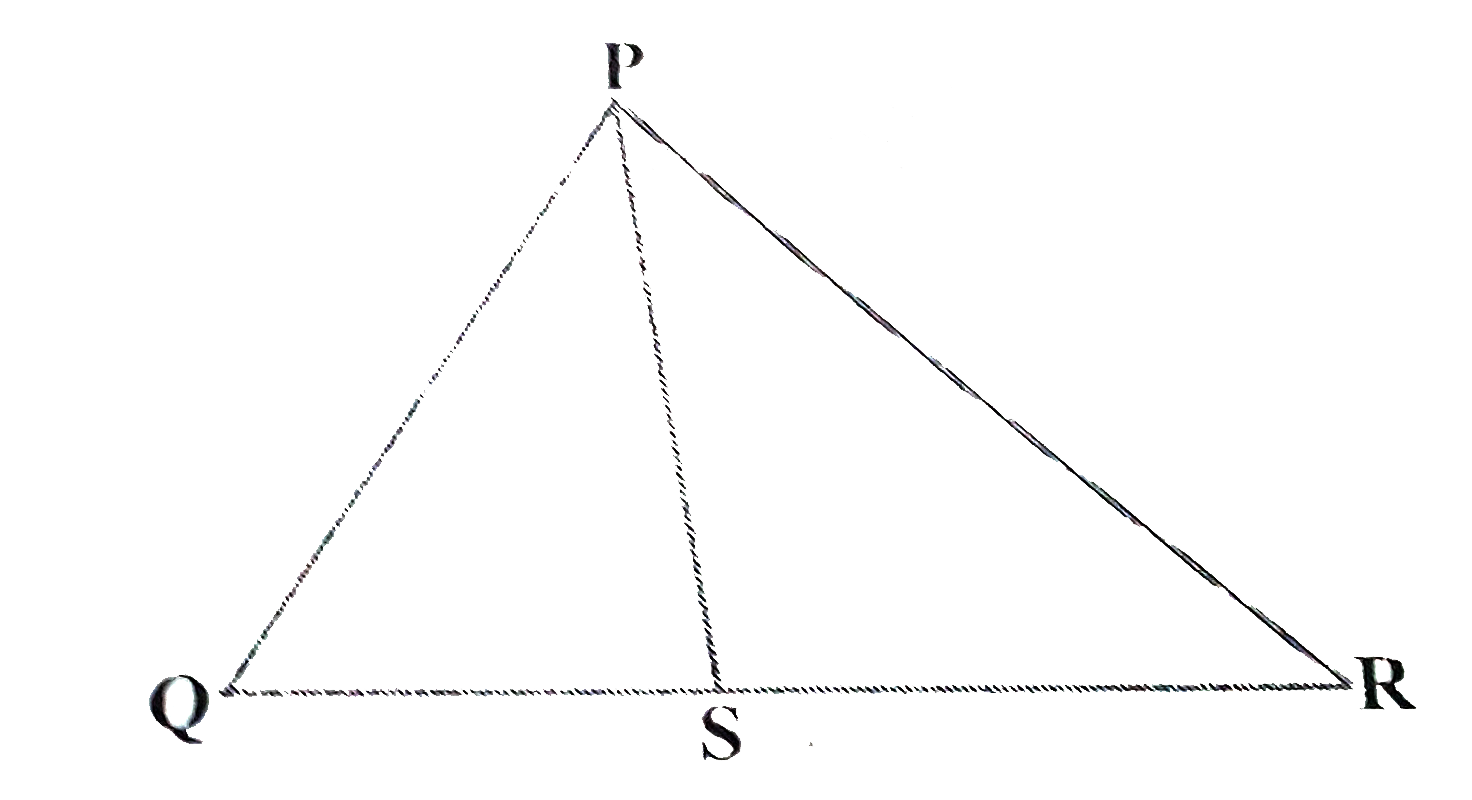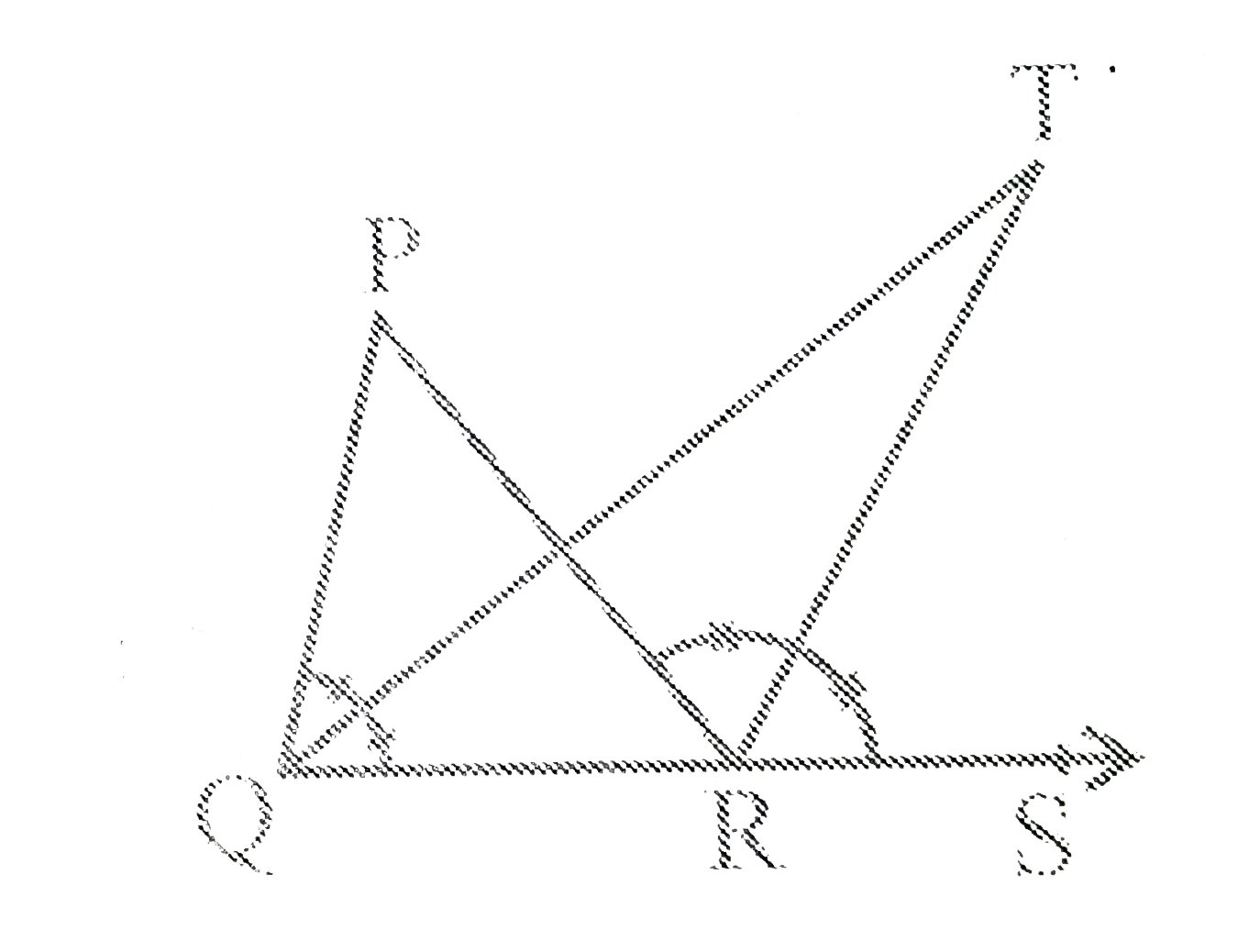In figure PS is the bisector of ∠QPRof ΔPQR. Prove that QSSR=PQPR.

In △QRT
RT∣∣SP [By construction]
And PS intersects QT and QR at two distinct points P and Q.
Therefore,
QT and QR will be divided in the same ratio
QSSR=PTPQ......(1)
[Basic proportionality theorem: If a line is drawn parallel to one side of a triangle, intersecting the other two sides at distinct points, then the other two sides are divided in the same ratio.]
Now,
RT∣∣SP
and PR is the transversal
Therefore,
∠SPR=∠PRT....(2)
[Alternate interior angles]
and
∠QPS=∠PTR....(3)
[Corresponding angles]
Also, given the
PS is the bisector of ∠QPR∠QPR=∠SPR
From (2) and (3)
∠PTR=∠PRT
Therefore, PT=PR [Sides opposite to equal angles of a triangle are equal]
Putting PT=PR in (1)
QSSR=PQPT
Hence proved.
(##X06_E0601_s01##)
Topper's Solved these Questions
Similar Questions
If PS is the bisector of ∠QPR and PT⊥QR . Show that ∠TPS=12(∠Q−∠R).
View SolutionIn Fig. , the side QR of △ PQR is produced to a point S. If the bisectors of ∠PQR and ∠PRS meet at point T, then prove that ∠QTR=12∠QPR.

View SolutionIn Figure, PQ>PR.QS and RS are the bisectors of ∠Q and ∠R respectively. Prove that SQ>SR.
View SolutionIn Figure, OP∣∣RS. Determine ∠PQR
View SolutionIn Fig. 6.44, the side QR of PQR is produced to a point S. If the bisectors of ∠PQR\ and∠PRS meet at point T, then prove that ∠QTR=12∠QPR .
View SolutionIn Figure PQ∣∣CD and PR∣∣CB.ProveAQQD=ARRB.
View SolutionIn Figure, PQRS is a square. Determine ∠SRP.
View SolutionIn Fig 7.51, PR > PQand PS bisects ∠QPR. Prove that ∠PSR >∠PSQ.

View SolutionIn Figure, PQRS is a square and SRT is an equilateral triangle. Prove that PT=QT (ii) ∠TQR=150
View SolutionIn figure, PQ=PR . Show that PS>PQ.
View Solution
